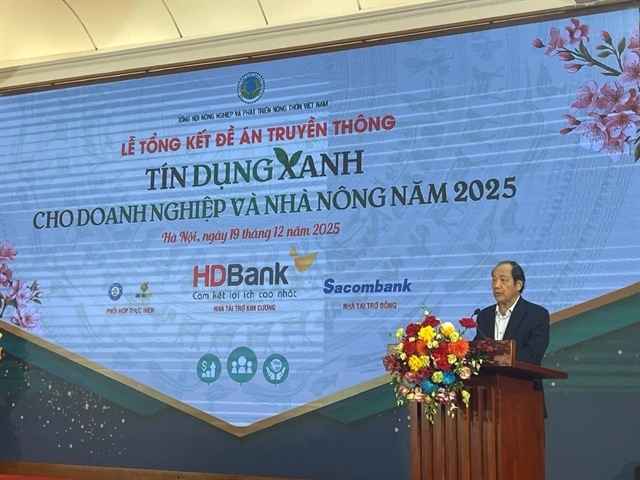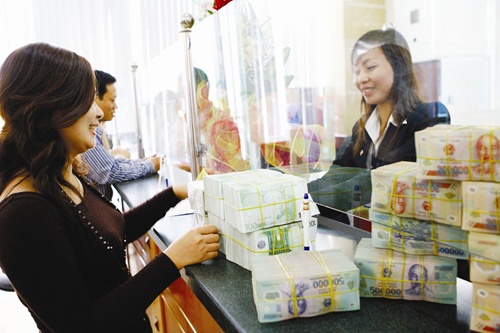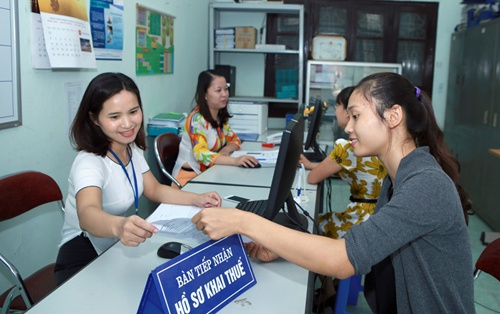Doubts over 5% average lending interest rate target
Doubts over 5% average lending interest rate target
Banking experts have expressed a great deal of scepticism at the government's target to cut the average lending interest rate to some 5 per cent.

This rate is equivalent to the average level of developing countries by 2020, as stated in a draft plan on economic restructuring being circulated for public opinion.
According to the plan drafted by the Ministry of Planning and Investment for the 2016-2020 period, the rationale behind the target is based on the government's willingness to raise the confidence of enterprises in the stability of the interest rate in the long and the medium-term, thereby encouraging more investment activities.
"Though the target has been applauded by many borrowers, in my point of view, it is unfeasible in the next few years," Chau Dinh Linh, a lecturer at the HCM City-based Banking University, wrote in a commentary for cafef.vn.
It was also contrary to the other objective mentioned in the draft plan -- that the inflation rate must be maintained at 5 per cent by 2020 -- Linh said.
The lecturer explained that if banks wanted to keep the lending rate at 5 per cent, they would have to offer a deposit interest rate below 5 per cent to be profitable. However, no one wanted to put money in banks if the interest he/she got could not cover the inflation. In this case, depositors would lose their money.
Therefore, the targeted inflation would hinder efforts to push down the lending interest rate.
Besides this, commercial banks' provisions for bad debts would continue to be a big cost for them, and they would have to maintain operational efficiency by raising the interest rate, Linh added.
As long as bad debts were not tackled, the lending interest rate of 5 per cent would be difficult to achieve, Linh stressed.
In its report on the economic situation in the first eight months of the year, the National Financial Supervisory Commission (NFSC) also said the reduction of lending interest rate is less likely due to the slow progress of bad debt settlement.
According to the commission, the bad debt ratio of the whole commercial banking system as of June this year is 2.78 per cent, an increase of 0.23 percentage points compared with the end of last year.
Meanwhile, expert Can Van Luc said setting a target for lending interest rate in the next five years seemed to be an administrative order not suitable in the context of the country's increasing integration and not in tandem with its effort to be recognised as a market economy.
"Cutting interest rate of loans to below 5 per cent is really a big challenge for commercial banks," Hoang Viet Trung, deputy director of the State Bank of Viet Nam's Ha Noi branch, said.
He said the feasibility of the target depended on many economic factors, including the stability of dong value, inflation rate, capacity of credit institutions and the supply-demand relation between depositors and lenders.
Falling inter-bank rate not connected with lending rate
According to the NFSC's report, in August, inter-bank rates continuously declined by 0.3-0.5 per cent across all tenors compared with figures from the previous month and maintained low levels.
Bao Viet Securities Corporation reported on Tuesday that the rates of three tenors – overnight, one-week and two-week – over the past week fell to below 0.8 per cent per year. In particular, the overnight rate dropped below 0.5 per cent per year on a particular day -- a historic record.
Early this year, the rates of the three tenors hovered at some 5 per cent per year.
Vice Chairman of the National Assembly's Economic Committee Nguyen Duc Kien attributed the situation to the banks' abundant liquidity and their improvement in ability to raise capital.
Nguyen dinh Tung, general director of the Orient Commercial Joint Stock Bank, said "the low inter-bank rates can be traced back to the slower pace of credit growth and the banks' obedience of the State Bank of Viet Nam's loan-to-deposit ratio regulation."
Under the regulation, the central bank requires commercial banks to keep the ratio at 80 per cent, meaning that if a bank can raise deposits amounting to VND10 trillion, it is allowed to lend a maximum of VND8 trillion and the rest can be used in the inter-bank market.
However, both Kien and Tung admitted that the drop in the inter-bank rate would not be followed by a decline in lending interest rates, as expected.
Tung affirmed that the idle capital would not be lent to enterprises. It would only be used to ensure liquidity, he added.
Meanwhile, Kien said the ability to reduce lending interest rates relied on the stability of the macro-economic conditions and enterprises' ability to absorb and use capital efficiently.























